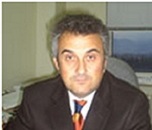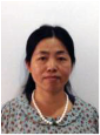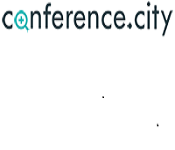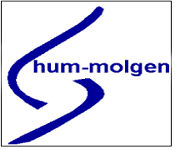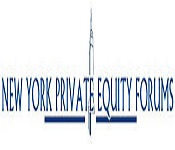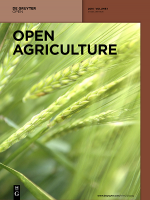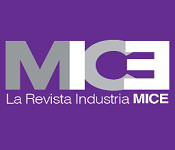Theme: Impeccable Growth of the Veterinary Sector
Veterinary 2017
Veterinary Conference welcomes participants, visitors, delegates and exhibitors from all over the world to the extravagant city of Paris, France. The conference is focusing on a wide array of topics including veterinary research, veterinary medicine, animal nutrition, poultry production, animal reproduction, animal welfare and clinical veterinary. ConferenceSeries Ltd organizes 3000+ events inclusive of 600+ Conferences, 1200+ Workshops and 1200+ Symposiums on various topics of Science & Technology across the globe with support from 1000 more scientific societies. ConferenceSeries Ltd also publishes 700+ Open Access Journals which contains over 50000 eminent personalities and reputed scientists as editorial board members.
Throughout the ages humans have depended on animals for service, food, and companionship. In modern times, animals have even played a crucial role in research settings where diseases are studied and drug therapies are developed. Veterinary medicine and animal care focus on the provision of health care, surgery, and preventive services for a variety of animal species. Veterinarians and veterinary technicians address health emergencies as well as provide routine medical care.
This veterinary conference focuses on the exponential growth taking place in the veterinary sector. Veterinary medicine has responsibilities in biomedical research; ecosystem management; public health; food and agricultural systems; and care of companion animals, wildlife, exotic animals, and food animals. The veterinary profession contributes to improvement of human and public health by improving agriculture and food systems, advancing biomedical and comparative medical research, preventing and addressing zoonotic diseases, enhancing environmental and ecosystem health, and helping manage 21st century public health challenges.
We take this opportunity to welcome you all in Paris, France. Mark Veterinary 2017 in the veterinary conferences 2017 calendar and join us to have an exciting experience and worthy scientific moments.
Market Analysis
7th International Veterinary Congress
Theme: “Impeccable Growth of the Veterinary Sector”
About the Conference
This veterinary conference focuses on the exponential growth taking place in the veterinary sector. Veterinary medicine has responsibilities in biomedical research; ecosystem management; public health; food and agricultural systems; and care of companion animals, wildlife, exotic animals, and food animals. The veterinary profession contributes to improvement of human and public health by improving agriculture and food systems, advancing biomedical and comparative medical research, preventing and addressing zoonotic diseases, enhancing environmental and ecosystem health, and helping manage 21st century public health challenges.
We take this opportunity to welcome you all in Paris, France. Mark Veterinary 2017 in the veterinary conferences 2017 calendar and join us to have an exciting experience and worthy scientific moments.
Significance and Scope
The top destination countries of VET students doing a registered work placement are all European. Spain, France, Belgium, Germany, the United Kingdom and Austria make up the top 6. This is explicable in terms of effort, cost and opportunity, considering the visa-free movement of people within the EU and the excellent opportunities offered in Europe within the Reaserch programme. Of the almost 7,000 international work placements, 1,350 were done in countries outside the EU. Curaçao, Turkey, the United States, South Africa and Canada are the 5 most popular non-EU destinations. There are some strong links between destination countries, sectors and qualifications. Spain, France and Italy, for example, are very popular with students in hospitality programmes. Belgium, Austria and Germany are favourite destinations of students in care, well-being and/or sports. The UK scores relatively high with students in business services and security, and in trade. The increasing importance of VET in higher education and the extensive and important role played by continuing vocational education and training adds to this complexity and makes the task of judging the character and boundaries of VET in Europe increasingly more difficult. The project will, over a 3-year period, analyse how vocationally oriented education and training has developed and changed in the last two decades (1995-2015) and on this basis point to the main challenges and opportunities facing the sector today. This will be addressed from two angles: First, VET is defined by its position in the overall education and training system. The expansion of general and academic education has in some countries created an imbalance potentially undermining the ability of the VET system to serve the labour market and society. Second, VET is directly influenced by external factors, notably demographic developments and labour market trends driven by technological and organisational change. Combining these two angles of analysis, the research will clarify how VET is defined and understood by stakeholders at national level, how this understanding has evolved over time and, notably, how it has been translated into political strategies, institutional solutions and didactic approaches.
Why Paris, France
The decreasing pet population, economic stagnation in Europe and unfavourable climatic conditions result in sluggish growth in French veterinary services revenue over 2013 compared to the 2008-2012 period. Meat of French origin is threatened by cheaper foreign substitutes, which decreases the scale of veterinary services provided by the livestock veterinary category, although France remains among the leaders in poultry and beef production. Ecoantibio 2012-2017 - the amendment to the regulation of prescription and distribution of antibiotics – is expected to negatively impact veterinarian revenues due to the greater monopolistic power of pharmacists . The industry is fragmented, with the three main players – Finalab, Centre Hospitalier Vétérinaire Pommery and Clinique Veterinaire Equine De Livet – in the lead. The elimination of export refunds for poultry producers is expected to decrease veterinary services to chicken growers, although the new agreement between the French and Chinese governments is expected to increase the volume of services provided to pig farmers, dragging the forecasted turnover up by 3% over 2013-2019.
Conference Highlights
· Veterinary
· Veterinary Medicine
· Veterinary Epidemiology
· Veterinary Research
· Economics and industry
· Animal Nutrition
· Animal Reproduction and Genetics
· Animal Biotechnology
· Livestock Production & Management
· Veterinary Forensics
· Animal welfare
· Poultry Production
· Dairy Technology
· Animal Models and Testing
· Veterinary Care and Management
· Entrepreneurs Investment Meet
Why to Attend
Veterinary-2017 could be an exceptional event that brings along a novel and International mixture of giant and medium veterinary researchers, leading universities and veterinary research and analysis establishments providing the conference an ideal platform to share expertise, foster collaborations across trade and world, and assess rising technologies across the world.
Market Analysis
The pet industry picked up the pace in 2016, improving over a growth rate in 2015. Looking ahead, the future of the industry will be even brighter. Pet owners able to enjoy the warmer than usual weather the country has been experiencing, pet owners will likely not feel inhibited from taking their pets outside, and perhaps making a stop for food and supplies along the way. In addition, private equity has shown considerable interest in pet retail, with a host of investments in the major players. The veterinary channel is also seeing changes. Packaged Facts expects the industry to have sales increasing noticeably through 2020.
France Market Report:
France is the European leader in research and manufacture of veterinary medicines and reagents, with over 6,600 employees, and the largest therapeutic arsenal in Europe (2,700 marketing authorizations), 50 production sites and many research centers. The global attractiveness of France in matters of animal health lies in the density of this industrial, veterinary, and professional fabric, in its recognized scientific and technical expertise, and in the capacity of its manufacturers to invest in managing networked R&D projects and international projects.
To contribute to the competitiveness of its member companies, the SIMV federates laboratories around joint projects, proposes collective strategies in response to the expectations of society and represents the views of its members in its decision-making environment.
With the ambition to contribute to highlight the innovations of tomorrow, the SIMV is a member of networks such as the French Network for Animal Health (RFSA), mirror group of the European Platform (ETPGAH), Hippolia (French foundation dedicated to equine research), ICSA (Animal Health Carnot Institute) as well as ARIIS (French Alliance for Research and Innovation of Health Industries).
With turnover of 829 million euros in France in 2013 and 1.5 billion euros in exports, including 700 million for the European Union alone, France is the European leader for research and production of veterinary medicines and reagents. This position is reinforced by the fact that 4 French companies (Merial, Virbac, Ceva, Vetoquinol) are in the world's top ten manufacturers of veterinary medicinesand reagents.
At global level, our top three members, Zoetis, MSD Santé Animale (Merck & Co) and Merial (Sanofi) total over 50% of the sales. Half of the 38 members of the SIMV are small and medium-sized enterprises (with turnover of less than 1% of the market). The veterinary market includes the dynamic companion animals segment, driven by increasing investment from French people in the well-being of their pets (market share of 39%), and the food-producing animal segment which accounts for over one half of the market (56%). Finally, particular interest is given to horse-riding (the equine market share being 5%).
The economic model of the veterinary medicine industry has to take account of the large number of species of animals, requiring marketing authorization application forms that are specific to the various species, in particular when the animals are raised for human consumption. The diversity of the species and of their specific pathologies tends to split this market up (17% of the medicines sold reach a turnover of less than 40,000 euros). The 10 to 12% share of turnover that is devoted by the veterinary medicines industry to R&D procures growth through innovation of up to 6% per year for it. Historical reasons (Pasteurian tradition, first veterinary schools, strong ties with the fabric of the human health industry which is also very powerful in France, etc.) and economic reasons related to the numbers of animals in France have made the French market the second-largest animal health market in the world: 41 million large food-producing animals (cattle, pigs, sheep, and goats), in addition to 301 million heads of poultry (chicken, turkeys, and guinea fowl), 9 million rabbits, and 800,000 horses, and not forgetting 7.4 million dogs and 11.4 million cats.
Finally, breaking down the market by main therapeutic class reveals a predominance of prevention of infectious diseases by using vaccines and metaphylactic measures (vaccines 21%, antiparasitics 18%, insecticides 11%) rather than by using curative treatments (antibiotics 17%, topical treatment products 9%).
Trade
Live cattle marketing and trade systems for Thailand are presented in Figure 4. Traditional mixed cattle-crop producers often produce cattle for low beef value markets. Cattle marketing chains are characterised by a large number of agents which ensures a competitive price structure at the lower end of the market. Traditional producers often sell their cattle to collectors/ middlemen at farm gate through spot transactions and immediate payment. Some also take their cattle directly to the local cattle market. At the market, sellers are usually individual farmers, professional traders or opportunistic speculators. Buyers are mainly traders serving slaughter for butchers or slaughter houses (50%). Some buyers purchase for breeding stock or fattening. Bargaining between a seller and a buyer starts when the seller provides information about the price and age of animals. Negotiations for whole truck load occur with well-known buyers/traders. Sellers pay a market fee and obtain the animal health certificate from local livestock officer to pass to the buyer with the cattle. If the buyer wants to move the animals across provinces, they need to get a movement permit and pays a certain fee. Mid and high value cattle producers differentiate their products to be traded. Specialised fattening producers often sell their products through spot marketing or group marketing, while contracting is often done between modern slaughter houses and large commercial feedlots. These producers tend to be located close to destination markets, and often sell directly to butchers or slaughter houses.
Global Market Research:
The global veterinary vaccines market is poised to reach USD 7.68 Billion by 2021 from USD 5.81 Billion in 2016, at a CAGR of 5.8% from 2016 to 2021.
Factors such as the increase in livestock population and repeated breakouts of livestock diseases; increasing incidence of zoonotic diseases; initiatives by various government agencies, animal associations, and leading players; and the introduction of new vaccine types are driving the veterinary vaccine market. However, the rising costs of storage & maintenance of vaccines and the increasing prices of meat (promoting the adoption of vegetarian diets) are hindering the growth of the veterinary vaccines market.
The veterinary vaccines market is segmented on the basis of product, disease, technology, and region. The veterinary vaccine products market is categorized into companion animal vaccines, livestock vaccines, poultry vaccines, porcine vaccines, equine vaccines, aquaculture vaccines, and other animal vaccines. In this market, companion animal vaccines form the fastest-growing product segment, due to increasing awareness about vaccination, increasing number of zoonotic diseases in the human population, and the increasing number of pets and pet owners.
On the basis of technology, the veterinary vaccines market is classified into inactivated vaccines, live attenuated vaccines, toxoid vaccines, conjugate vaccines, DNA vaccines, recombinant vaccines, and subunit vaccines. Live attenuated vaccines hold the largest share of the veterinary vaccines market, by technology. The live attenuated vaccines segment is mainly driven by factors such as the increasing prevalence of diseases among porcine and poultry animals as well as the ease of administration and long-term immunity offered by these vaccines.
On the basis of geography, the veterinary vaccines market is segmented into North America, Europe, Asia, and the Rest of the World (RoW). In 2016, Europe accounted for the largest share of the veterinary vaccines market, followed by North America. However, Asia is expected to register the highest growth during the forecast period. In Asia, market growth will primarily be concentrated in China, India, Thailand, and South Korea. Major players operating in the veterinary vaccines market are Zoetis Inc. (Pfizer) (U.S.), Merck Animal Health (U.S.), Merial Inc. (Sanofi) (France), Boehringer Ingelheim (Germany), and Elanco Animal Health (U.S.).
Veterinary vaccines are the most profitable part of the growing animal medicine market. Profitability in the veterinary vaccine market is fueled by the drive for food safety and the high cost of treating contagious diseases in livestock animals, increasing investment in vaccines by government agencies, and rising demand for companion pets in countries around the world.
Given the preventive focus of veterinary health care for both commercial animals and human companion animals, the veterinary vaccine market is expected to see considerable growth in revenue over the next five years,” from a reported value of $12.1 billion in 2015 to an anticipated value of $20.6 billion by 2021.
According to a report published by Zion Market Research of Sarasota, FL, factors influencing the market growth include “rising maintenance cost of vaccine storage,” chronic diseases in food animals, and economic downturns that could be offset by increasing the demands for human consumption of animal products, such as milk, eggs, and meat.
World population is expected to grow by 2.3 billion over the next decades, reaching over nine billion in 2050. Most of this growth will be happening in developing countriesi but the impact of that population growth will undoubtedly be felt far and wide. If production losses (eg from disease, pests, storage) and food waste (eg during processing, transportation and consumption) are not appropriately dealt with, global food production will have to increase by 70% between 2005-07 and 2050 to face the growing population trend. According to the OECD,“the challenge [now] is to feed a growing, more urban and, on average, richer population whilst adopting more efficient and sustainable production methods and adapting to climate change.” Feeding the world’s population will bring – in fact it is already bringing – incredible challenges in terms of sustainably balancing demand and supply, and adequately managing the contribution of the food system to the mitigation of climate change, for example. In the next 50 years, the production of food will most likely involve a strong competition for land, water and energy. Precautionary strategic measures will therefore need to be taken to ensure that the world’s capacity to produce food is not jeopardised. In its Foresight Report on the Future of Food and Farming, the Government Office for Science warns that “This is a unique time in history – humanity is facing a future that is very different from the past. Decisions made now and over the next few decades will disproportionately influence the future.” Quality of food, not only the quantity of it, will also suffer a dramatic shift. As incomes rise in developing countries, diets are expected to slowly diversify away from staple foods towards meat and processed foods that will favour livestock and dairy products. An analysis of the food consumption in countries like China and Brazil shows that the country’s development is generally accompanied by a sharp increase in meat consumption. Overall, the global cattle population has been predicted to increase from 1.5 billion in 2000 to about 2.6 billion by 2050, and the global goat and sheep population from 1.7 billion to about 2.7 billion over the same period. This places an unprecedented pressure on maintaining the health and sustainability of the herd. Similarly, it is estimated that global poultry production will have to quadruple to satisfy demand
The veterinary vaccine market is broken down into two main segments: vaccines for livestock and those for companion animals. The livestock market accounts for a much greater share of the veterinary vaccine market at over 62 percent, with more than 30 percent of that for porcine (pig) virus vaccines. Pet vaccines account for 38 percent of the global market, broken down into equine (horse), canine (dog) and feline (cat) vaccines. Within the pet segment, vaccines for dogs represent the most lucrative market, growing at a rate of about six percent per year.
Global Veterinary Universities:
University of Florida College of Veterinary Medicine, USA
University of Georgia College of Veterinary Medicine, USA
University of Illinois College of Veterinary Medicine, USA
Iowa State University College of Veterinary Medicine, USA
Kansas State University College of Veterinary Medicine, USA
Louisiana State University School of Veterinary Medicine, USA
Michigan State University College of Veterinary Medicine, USA
University of Minnesota College of Veterinary Medicine, USA
Mississippi State University College of Veterinary Medicine, USA
University of Missouri College of Veterinary Medicine, USA
North Carolina State University College of Veterinary Medicine, USA
Ohio State University College of Veterinary Medicine, USA
Oklahoma State University College of Veterinary Medicine, USA
Oregon State University College of Veterinary Medicine, USA
University of Pennsylvania School of Veterinary Medicine, USA
Purdue University School of Veterinary Medicine, USA
Universidad Autonoma de Aguascalientes Centro Agropecuario, Mexico
Universidad Autónoma del Estado de Mexico Facultad de Medicina Veterinaria y Zootecnia, Mexico
Universidad Autónoma de Nayarit Escuela Superior de Medicina Veterinaria y Zootecnia, Mexico
Universidad Autónoma de Nuevo León Facultad de Medicina Veterinaria & Zootecnia
Universidad Autónoma de Querétaro Escuela de Medicina Veterinaria & Zootecnia
Veterinärmedizinische Universität Wien, Austria
Royal Veterinary and Agricultural University, Denmark
University of Zagreb Faculty of Veterinary Medicine, Croatia
University of Helsinki Faculty of Veterinary Medicine, Finland
Free University of Berlin Faculty of Veterinary Medicine, Germany
Tierärztliche Hochschule Hannover, Germany
Universitaet Giessen Fachbereich Veterinärmedizin, Germany
Universität Leipzig Veterinärmedizinische Fakultät, Germany
Università di Bologna Facoltà di Medicina Veterinaria, Italy
Università di Messina Facoltà di Medicina Veterinaria, Italy
Università di Milano Facoltà di Medicina Veterinaria, Italy
Università di Napoli Federico II Facoltà di Medicina Veterinaria, Italy
Università di Parma Facoltà di Medicina Veterinaria, Italy
Università di Perugia Facoltà di Medicina Veterinaria, Italy
Veterinary Universities in France
Ecole Nationale Veterinaire d'Alfort, France
Ecole Nationale Veterinaire de Nantes, France
French Veterinary Schools, France
Veterinary Societies:
The North American Veterinary Community, USA
Belgian Veterinary Computer Association, Belgium
Czech Academy of Agricultural Sciences, Czech Republic
Hellenic Veterinary Medical Society, Greece
Slovak Small Animal Veterinary Association, Slovakia
House Rabbit Society, Australia
Laboratory Animal Science Association, UK
Austrian Small Animal Veterinary Association, Austria
World Equine Veterinary Association, Brazil
Irish Veterinary Acupuncture Society, Ireland
Belgian Veterinary Computer Association, Belgium
Austrian Small Animal Veterinary Association, Austria
Nordic Society for Veterinary Epidemiology, Iceland
World Equine Veterinary Association, Brazil
Swedish Society of Veterinary Medicine, Sweden;
Association of Practicing Veterinary Surgeons, Russia
Association of British Veterinary Acupuncture, UK
Veterinary Funding Agencies:
The French Agency for Veterinary Medicinal Products
American College of Veterinary Internal Medicine Foundation
American Veterinary Medical Association
Animal Behavior Society Grants and Awards
Found Animals Foundation
Horses and Humans Foundation
International Foundation for Ethical Research (IFER)
Michigan Association of Veterinary Technicians
Morris Animal Foundation
National Pork Board
U.S. Poultry and Egg Association
Waterbird Society Research Grants
BIRDNET : Grants, Awards, and Prizes in Ornithology
American Jersey Cattle Association/AJCC Research Foundation/US Jersey
Conclusion:
The worldwide veterinary vaccine market encompasses North America, Europe, Asia Pacific, Latin America, the Middle East and Africa. Currently, North America and Europe dominate the veterinary vaccine trade, commanding more than 68 percent of the market. The U.S. is expected to continue to account for nearly 38 percent of that market, primarily because of increasing pet ownership and the great demand for dairy products. In the production of meat for consumption, for example, efficiency gains could be achieved if the genetic markers associated with traits of economic value were known. For example, “the nutritive value of meat and milk could be enhanced by providing the livestock industry with information that would allow farmers to produce animals with a fatty acid composition closer to that recommended by government.”On the other hand, research and innovation can also help to address major inefficiencies in the reproductive performance of ruminants, pigs and poultry which result in breeding percentages well below the potential of the herd/flock. Either by improving the fertility (cattle and sheep), or developing scientifically-informed diets for the animals that avoid overfeeding them crude protein or performing genetic selection (pigs, poultry), a great deal could potentially be achieved in enhancing the response to the current challenges.
References:
http://staff.lib.msu.edu/harris23/grants/3asvet.htm
http://www.marketsandmarkets.com/PressReleases/veterinary-diagnostics.asp
http://www.marketresearchreports.com/veterinary
http://www.marketresearch.com/Life-Sciences-c1594/Healthcare-c85/Veterinary-Health-c1627/
http://www.reportlinker.com/ci02247/Veterinary-Healthcare.html
http://valuationresources.com/Reports/SIC0740VeterinaryServices.htm
https://www.ibisworld.com/industry/default.aspx?indid=1447
http://valuationresources.com/Reports/SIC0740VeterinaryServices.htm
Conference Highlights
- Veterinary
- Veterinary Medicine
- Camel Science
- Veterinary Epidemiology
- Animal Nutrition
- Animal Reproduction
- Animal Biotechnology
- Livestock Production & Management
- Poultry Production
- Dairy Technology
- Animal Welfare
- Veterinary Care & Management
- Veterinary Nursing
- Equine Research and Medicine
- Veterinary Pharmacology
- Veterinary Pathology
- Veterinary Parasitology
- Veterinary public health and Zoonoses
- Veterinary Virology
- Veterinary Epidemiology
- Veterinary Toxicology
- Veterinary Genetics
- Veterinary Ophthalmology
- Veterinary Neuroanatomy and Clinical Neurology
- Veterinary Entomology
- Challenges to Food Hygiene and Safety
- Veterinary Bacteriology and Mycology
- Veterinary Acupuncture
- Veterinary Internal Medicine
- Veterinary Dermatopathology
- Meat Science, Food Toxicology, Impact of New Processes and Technologies on Food Toxicology
- Veterinary Microbiology and Microbial Disease
- Veterinary Dentistry
- Avian and Exotic Science
- Veterinary Pharmacovigilance
- Veterinary Business and Enterprise
- Environmental Protection, Public Health and Co-Management with Food Safety
- Veterinary Surgery
- Veterinary Anesthesia
- Veterinary and Animal Ethics
- Veterinary Biologics
- Veterinary Oncology
- Impact of Livestock Management and Antimicrobial Resistance of Pathogens on Food Safety
- Animals and Society
- Animal Ecology
- Livestock Production
- Animal Agriculture
- Aquaculture
- Biology of Domestic Animals
- Anatomy and Physiology of Domestic Animals
- Animal nutrition
- Animal Genetics and Breeding
- Animal Reproduction
- Applications of Animal Biotechnology
- Cloned and transgenic animals and their regulation
- Animal Growth and Development
- Animal Products and Food Safety
- Animal Health, Welfare and the Environment
- Applied Animal Welfare science
- Animal Behavior
- Animal Testing
- Animal Diseases
- Large Animal diseases
- Small and Companion animal Diseases
- Problems of Animal Health in Tropics
- Vector-borne animal diseases
- Soil-borne animal diseases
- Contact animal diseases
- Animal Health Management
- Wildlife Management
- Animal Welfare in international trade
- Dairy Farming
- Regulatory aspects of Animal Science
- Regulatory aspects of Animal Science
- Animal Health Industry
- Hospital Design and Management
- Veterinary Gastroenterology
- Veterinary Endocrinology
- Veterinary Cardiology
- Veterinary Respiratory Medicine
- Veterinary Critical care and emergency medicine
- Veterinary Radiology and Diagnostic imaging
- Veterinary Nephrology
- Veterinary Orthopedics
- Veterinary Pain management
- Zoological Medicine
- One Health
- Responsible Use of Animal Medicines
- Antimicrobial resistance (AMR)
- Nanotechnology in Veterinary
To share your views and research, please click here to register for the Conference.
To Collaborate Scientific Professionals around the World
| Conference Date | September 04-05, 2017 | ||
| Sponsors & Exhibitors |
|
||
| Speaker Opportunity Closed | Day 1 | Day 2 | |
| Poster Opportunity Closed | Click Here to View | ||
Useful Links
Special Issues
All accepted abstracts will be published in respective Our International Journals.
- Journal of Veterinary Science & Technology
- Journal of Veterinary Science & Medical Diagnosis
- Research & Reviews: Journal of Veterinary Sciences
Abstracts will be provided with Digital Object Identifier by































